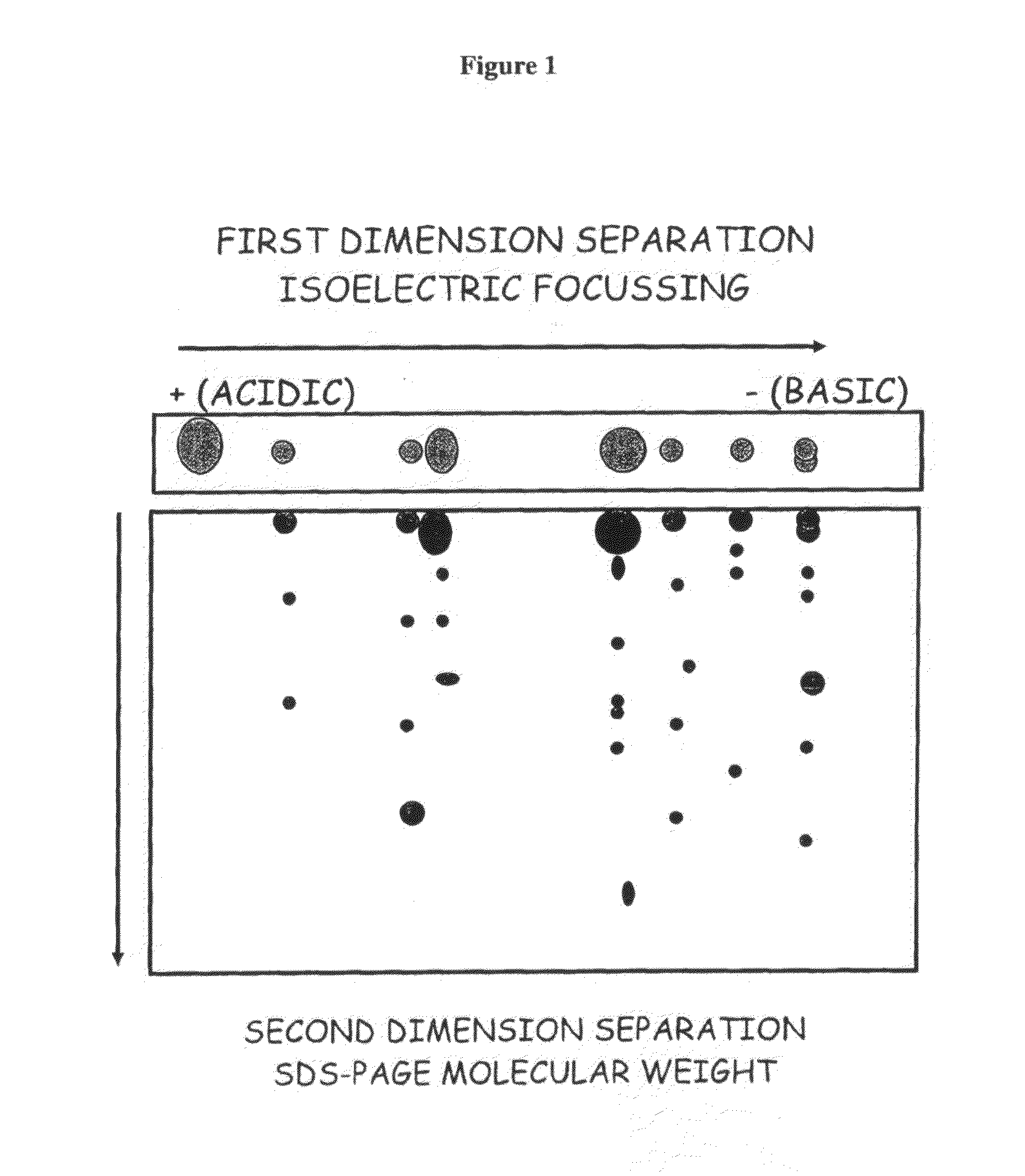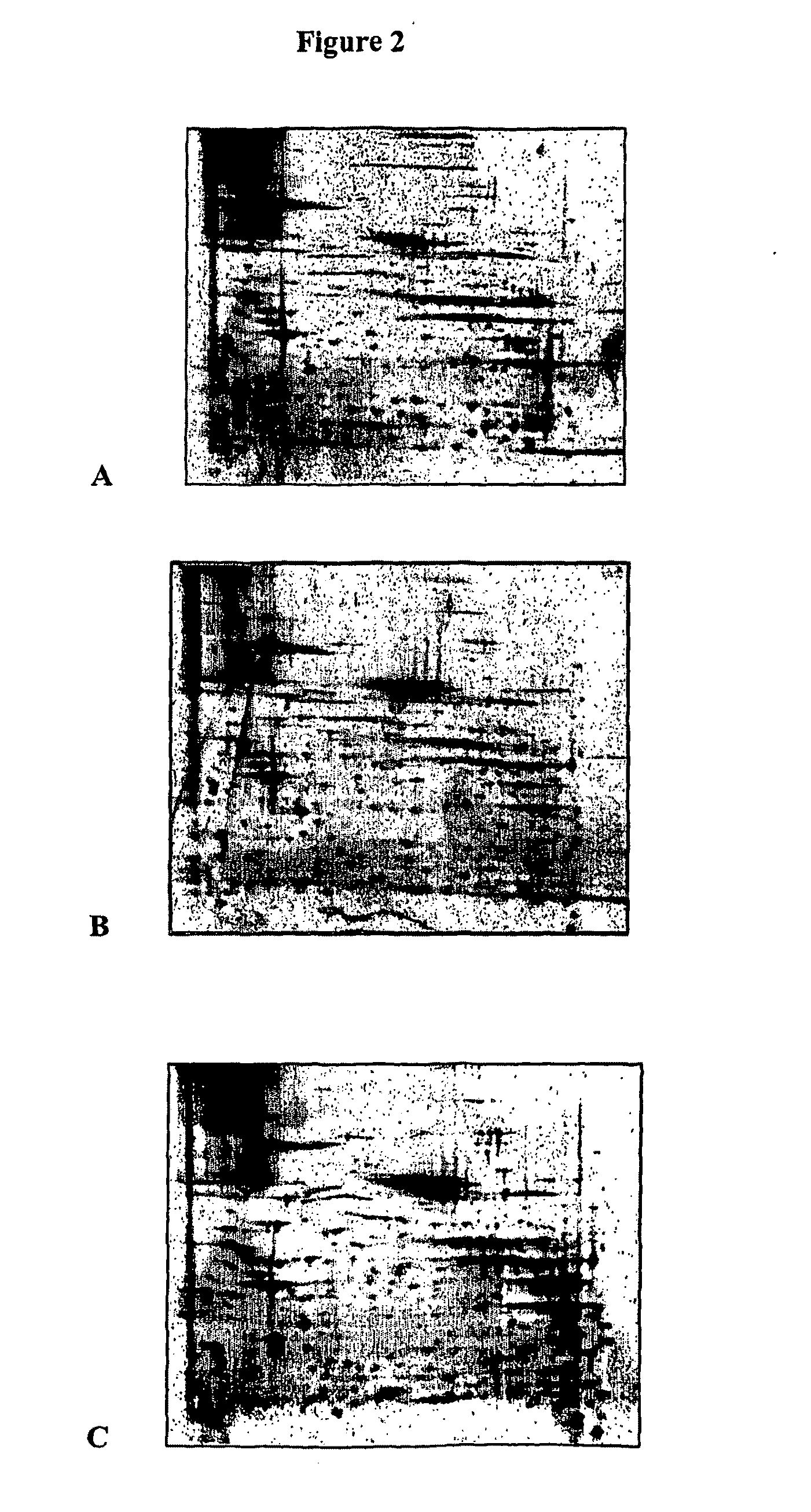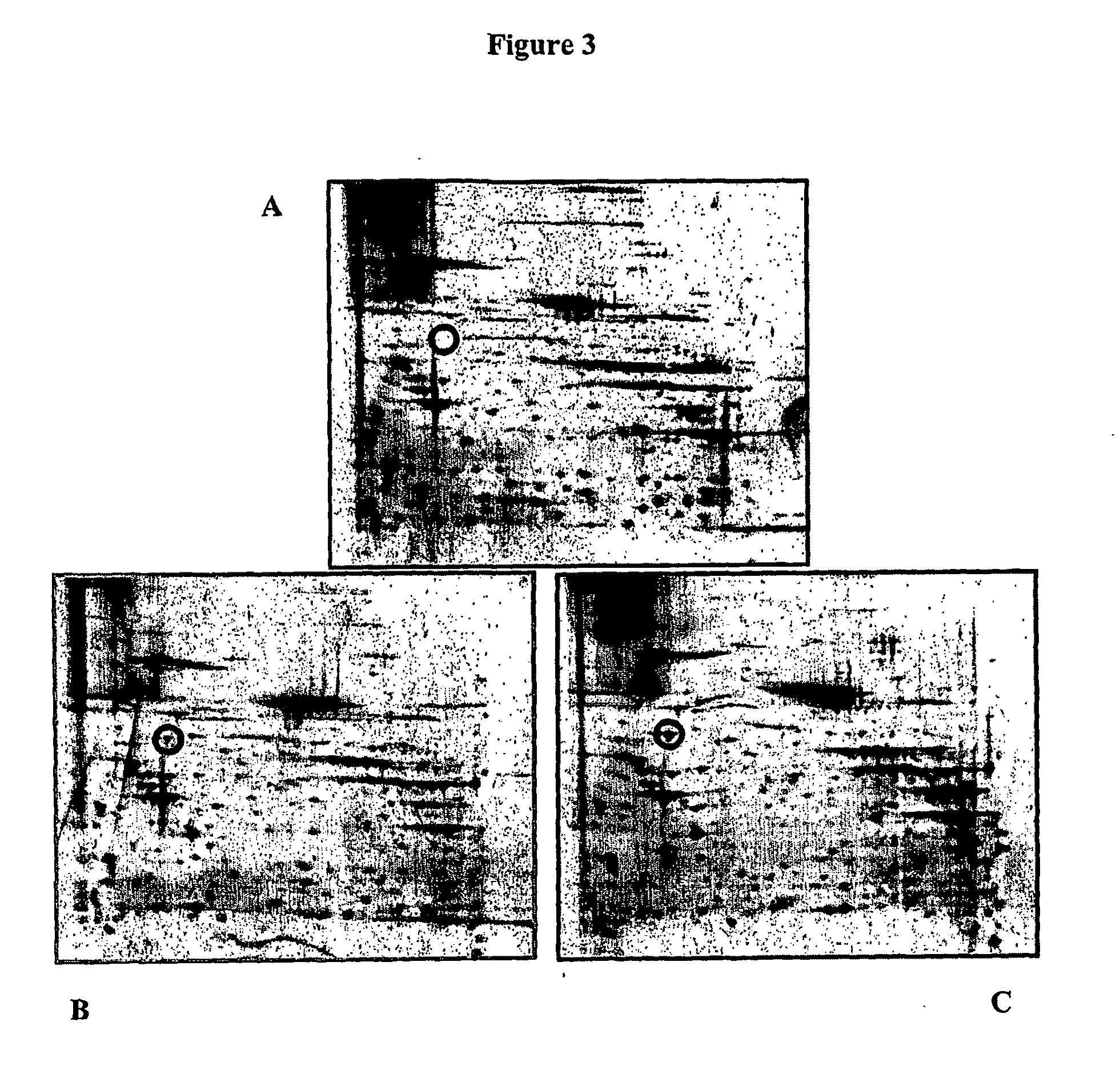Blood cell separation
a blood cell and separation technology, applied in the field of prenatal diagnosis, can solve the problems of destroying the foetus, spontaneous miscarriage of the foetus, and using circulatory foetal nucleic acid, and achieve the effect of increasing the efficacy of foetal cell isolation and enrichmen
- Summary
- Abstract
- Description
- Claims
- Application Information
AI Technical Summary
Benefits of technology
Problems solved by technology
Method used
Image
Examples
Embodiment Construction
Identification of Heat-Shock Protein 60 as being Foetal Cell Surface Specific
[0070]HSP-60 was identified as being foetal erythroid cell surface specific by comparison of proteins expressed by foetal erythroid cell membranes and adult erythrocyte membranes.
[0071]Specifically, red blood cell ghost membranes, prepared and stored at −80° C., were used. After optimisation of membrane solubilisation protocols, a mixture of detergents ASB-14 and CHAPS at concentrations of 0.4% and 1.2% respectively were found to yield the best results. 25 μg of solubilized membranes were used in each two-dimensional electrophoresis experiment. Focusing was achieved by using an immobilised pH gradient and enhanced by adding ampholytes (a mixture of amphoteric species with a range of pI values) to the sample loading buffer. Proteins were loaded at the anode and a current applied to the strip. As the proteins moved towards the cathode they were held in place at the point where their net charge was zero, i.e. ...
PUM
 Login to View More
Login to View More Abstract
Description
Claims
Application Information
 Login to View More
Login to View More - R&D
- Intellectual Property
- Life Sciences
- Materials
- Tech Scout
- Unparalleled Data Quality
- Higher Quality Content
- 60% Fewer Hallucinations
Browse by: Latest US Patents, China's latest patents, Technical Efficacy Thesaurus, Application Domain, Technology Topic, Popular Technical Reports.
© 2025 PatSnap. All rights reserved.Legal|Privacy policy|Modern Slavery Act Transparency Statement|Sitemap|About US| Contact US: help@patsnap.com



